In the current hyper-competitive business landscape, companies face numerous challenges ranging from evolving customer needs to fluctuating world economies. To navigate these hurdles successfully, businesses must possess the ability to adapt quickly and efficiently – a trait commonly referred to as business agility. This capability enables organizations to adjust flexibly to internal and external factors, including market fluctuations, to remain competitive and ultimately thrive. Agility is the key to survival in a constantly changing business environment.
So what exactly is “Business Agility”?
The term “agility” means a company’s ability to adapt quickly to changing circumstances and unpredictable events. Business agility is the capability of an organization to effectively utilise its resources, processes, and knowledge to quickly identify and respond to various opportunities and challenges, including market shifts, customer requirements, and emerging technologies.
This organizational approach is essential in helping businesses quickly respond to both external and internal market changes. Establishing the flexibility to meet customer demands enables businesses to survive, thrive, and retain their customer base.
Business agility is vital to an organization’s success and sustainability in the constantly evolving business world.
How can businesses be agile?
Businesses can be agile if they adopt an approach and mindset that allows them to respond quickly to environmental changes. Now, let’s look at a few critical steps to becoming more agile:
- Encourage entrepreneurial thinking and autonomy: Empower all employees to think like entrepreneurs and make decisions independently to increase agility. This promotes faster decision-making and problem-solving.
- Foster small teams: Work in small, agile teams to avoid bureaucracy and improve collaboration. Avoid becoming too hierarchical, which can hinder agility.
- Avoid attachment: Remain flexible and open to new ideas, even if they challenge existing processes, software, or culture. Agility requires a willingness to adapt to change.
- Focus on sprints: Plan projects in shorter rather than longer timelines to remain agile and prevent wasted effort. This enables quick adjustments and allows for adaptation to changing circumstances.
- Regular check-ins: Use reliable metrics to monitor progress and regularly seek employee feedback on improving agility. This allows for continuous improvement and adaptation to changes in the business environment.
Why Is Business Agility Important?
It is often said that change is the only constant in life, and this is particularly true in the business world. Markets, customers, demands, and companies can undergo rapid and unpredictable transformations, making it essential for businesses to stay adaptable and responsive to remain competitive.
This is where business agility becomes essential. The ability to adapt quickly to changing circumstances and respond effectively to shifting market trends and customer needs is critical for success. Organizations that can pivot and be flexible are more likely to not only survive but also thrive in a dynamic business environment.
A successful business is one that knows when to pivot and when to be flexible as different situations arise. Business agility makes these actions possible, enabling organizations to stay ahead of the curve and remain competitive in a rapidly changing marketplace.
Business agility not only helps companies adjust to changes in the market and internally, but it also grows and evolves alongside market shifts and trends. Being prepared to adapt and keep up with the latest trends strengthens your business.
Trends to watch out
1. Thinking for a better customer-first approach
Putting the customer first is key to business agility. By prioritizing the customer’s needs and desires, companies can gain a competitive edge, respond rapidly to market changes, and enhance customer loyalty.
One way to implement a customer-first approach is by using design thinking. Design thinking involves empathy for the user and the ability to ideate, prototype, and test solutions to problems. By using this approach, companies can better understand customer needs and develop products and services that meet those needs. This process involves a feedback loop, which ensures that the customer is always at the forefront of decisions.
Another way to implement a customer-first approach is by using agile methodologies. Agile is a project management approach that focuses on delivering value to the customer in a timely and efficient manner. By using agile, companies can quickly adapt to changing customer needs and market conditions. Agile methodologies involve collaboration and communication between the development team and the customer to ensure that the product or service meets their needs.
This approach requires a mindset shift and a commitment to collaboration and communication with the customer. When a company puts the customer first, it can stay ahead of the competition and quickly adapt to market changes.
2. Technical Excellence by leveraging AI & ML
Incorporating AI and machine learning (ML) technologies into a company’s operations can provide a technical excellence aspect to business agility. These technologies can help businesses automate and streamline processes, make data-driven decisions, and quickly adapt to changes in the market or customer demands.
For instance, AI and ML can help companies analyze customer data, identify patterns and trends, and gain insights into their preferences and behaviors. This can help companies tailor their products and services to meet customer needs and improve customer satisfaction.
Additional benefits include:
- AI and machine learning enable more precise insights and cleaner processes for creating and testing programming code.
- These technologies are capable of reviewing code with better accuracy to identify and eliminate bugs, making development more efficient and effective.
- By integrating with innovative smart technologies like IoT devices, RPA, quantum computing, and other cutting-edge technologies, AI and machine learning can help accelerate development time and bring products to market faster.
3. The dominance of Scaled Agile and Scrum Approaches
The dominance of Scaled Agile and Scrum approaches is a significant aspect of business agility. These methodologies enable organizations to efficiently manage complex projects, adapt to changing requirements, and deliver value to customers quickly. Here are some key points:
- Scaled Agile Framework (SAFe) and Scrum are two popular frameworks that provide a structured approach to agile project management.
- SAFe enables organizations to align their development teams with their business goals and strategies, while Scrum empowers cross-functional teams to deliver products incrementally.
- SAFe and Scrum approaches emphasize collaboration, communication, and continuous improvement to optimize performance and deliver value.
- Both frameworks provide a set of best practices and guidelines that can be customized to suit the specific needs of an organization.
- As more organizations adopt agile methodologies, Scaled Agile and Scrum will continue to dominate the agile landscape and remain critical components of business agility.
4. Remote work & Agility
Remote work and business agility are closely connected, as remote work provides a framework for organizations to become more agile and adaptable. Here are some of the ways in which remote work can enhance business agility:
- Flexibility: Remote work provides flexibility in terms of location, time, and work arrangements. This allows organizations to respond quickly to changing circumstances, such as a sudden shift in market demand or a disruption to the supply chain.
- Increased Productivity: Remote work can increase productivity by eliminating time-consuming commutes and distractions in the workplace. Remote workers also have more control over their work environment, which can lead to improved work-life balance and increased job satisfaction.
- Reduced Overhead Costs: Remote work can significantly reduce overhead costs associated with traditional office-based work, such as rent, utilities, and office supplies. This can free up resources that can be used to invest in growth initiatives or innovation.
- Agile Methodologies: Remote work supports agile methodologies, such as Scrum and Kanban, which promote iterative and incremental development. These methodologies are designed to be flexible and adaptable, allowing organizations to respond quickly to changing market conditions or customer needs.
5. DevOps & Agile Testing
DevOps and Agile testing are methodologies that businesses can adopt to increase their flexibility and responsiveness to changes in the market.
DevOps and Agile testing can help in business agility in several ways:
- Faster Time-to-Market: DevOps and Agile methodologies encourage continuous integration, testing, and deployment, resulting in faster delivery of products and services to market. This allows businesses to respond quickly to changing market demands and gain a competitive edge.
- Increased Quality: Agile testing ensures that software is thoroughly tested and validated before release, resulting in fewer defects and improved quality. This reduces the risk of product failure, improves customer satisfaction, and enhances the brand reputation of the business.
- Better Collaboration: DevOps and Agile methodologies emphasize collaboration among cross-functional teams, including developers, testers, and operations personnel. This collaboration results in better communication, faster feedback, and improved quality of the end product.
- Cyber Security
Cybersecurity is essential for business agility because it helps protect a company’s assets, reputation, and customer trust. To achieve cybersecurity for business agility, companies should consider the following:
- Implement a robust cybersecurity program: This program should include measures such as employee training, access controls, data encryption, and regular security audits.
- Use threat intelligence: Threat intelligence can help companies stay ahead of potential cyber threats by providing real-time information on emerging threats and vulnerabilities.
- Conduct regular risk assessments: Risk assessments can help companies identify potential vulnerabilities and develop plans to mitigate them.
- Have an incident response plan: In the event of a cybersecurity incident, having a plan in place can help minimize the impact and reduce recovery time.
A methodical plan could be the best course of action
Developing business agility is a patient process. You need to weigh the needs, benefits, challenges, success stories, and importance of your organization as you move forward.
Business agility, if executed properly, can provide a competitive edge to organizations by quickly meeting customer demands and achieving desired outcomes. Effective leadership is crucial in driving this change, as without the right tone and vision, transforming the existing culture and design can be challenging at a large scale.
In conclusion, it is important to note that agile transformation is a long-term process that requires persistence and commitment. While there are no shortcuts or magical solutions, the end results are durable and sustainable


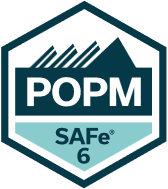

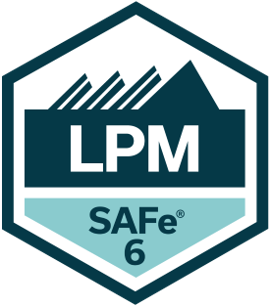




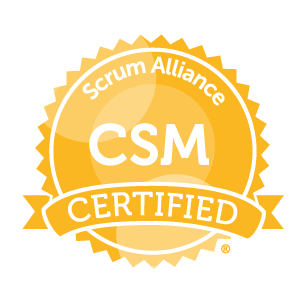

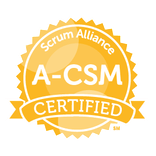

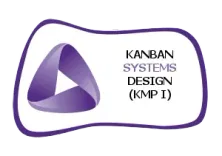











One Response
It’s hard to find well-informed people on this subject, but you sound like you know what you’re talking about!
Thanks